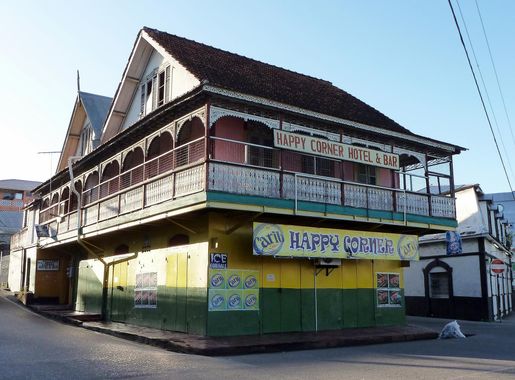
San Fernando: The Industrial Heart with a Tropical Soul
Discover San Fernando, Trinidad and Tobago's industrial heartland with a tropical twist, where vibrant culture meets natural wonders and culinary delights.
San Fernando, the second-largest city in Trinidad and Tobago, offers a unique blend of industrial vigor and tropical charm. Located in the southwestern part of Trinidad, this bustling city is known for its vibrant energy, picturesque landscapes, and a rich cultural tapestry. As you stroll through the streets, you'll be captivated by the blend of modern commercial hubs and historical landmarks. The city's waterfront offers breathtaking views of the Gulf of Paria, making it a perfect spot for both relaxation and exploration. San Fernando is a gateway to some of Trinidad's most stunning natural attractions. Just a short drive away, you'll find the world-famous Pitch Lake, the largest natural deposit of asphalt in the world. This geological wonder is not only a sight to behold but also a piece of living history. The nearby Pointe-à-Pierre Wildfowl Trust provides a serene escape, where visitors can enjoy bird watching and learn about local wildlife conservation efforts. The city's cultural scene is equally captivating, with a calendar full of events that celebrate Trinidad and Tobago's diverse heritage. From lively street parades during Carnival to the soothing rhythms of steelpan music, San Fernando is a city that knows how to celebrate life. The local cuisine is a delightful mix of flavors, offering everything from spicy doubles to savory roti, ensuring that your taste buds are in for a treat. Whether you're a history buff, nature lover, or foodie, San Fernando has something to offer everyone.
Local tips in San Fernando
- Visit the San Fernando Hill for panoramic views of the city and the Gulf of Paria.
- Explore the Pitch Lake early in the morning to avoid the midday heat.
- Try local street food like doubles and roti at the San Fernando Market.
- Take a guided tour of the Pointe-à-Pierre Wildfowl Trust for a peaceful nature experience.
- Plan your visit around Carnival season to experience the city's vibrant festivities.
San Fernando: The Industrial Heart with a Tropical Soul
San Fernando, the second-largest city in Trinidad and Tobago, offers a unique blend of industrial vigor and tropical charm. Located in the southwestern part of Trinidad, this bustling city is known for its vibrant energy, picturesque landscapes, and a rich cultural tapestry. As you stroll through the streets, you'll be captivated by the blend of modern commercial hubs and historical landmarks. The city's waterfront offers breathtaking views of the Gulf of Paria, making it a perfect spot for both relaxation and exploration. San Fernando is a gateway to some of Trinidad's most stunning natural attractions. Just a short drive away, you'll find the world-famous Pitch Lake, the largest natural deposit of asphalt in the world. This geological wonder is not only a sight to behold but also a piece of living history. The nearby Pointe-à-Pierre Wildfowl Trust provides a serene escape, where visitors can enjoy bird watching and learn about local wildlife conservation efforts. The city's cultural scene is equally captivating, with a calendar full of events that celebrate Trinidad and Tobago's diverse heritage. From lively street parades during Carnival to the soothing rhythms of steelpan music, San Fernando is a city that knows how to celebrate life. The local cuisine is a delightful mix of flavors, offering everything from spicy doubles to savory roti, ensuring that your taste buds are in for a treat. Whether you're a history buff, nature lover, or foodie, San Fernando has something to offer everyone.
When is the best time to go to San Fernando?
Iconic landmarks you can’t miss
Palmiste Park
Explore the serene beauty of Palmiste Park in San Fernando, Trinidad, a lush oasis perfect for relaxation, picnics, and nature walks.
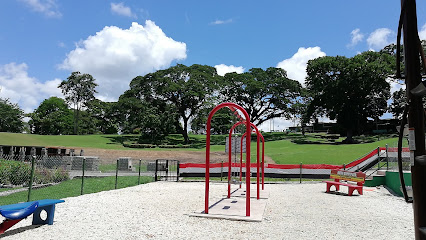
San Fernando Hill
Discover the breathtaking views and serene atmosphere at San Fernando Hill, a must-visit park and tourist attraction in Trinidad.
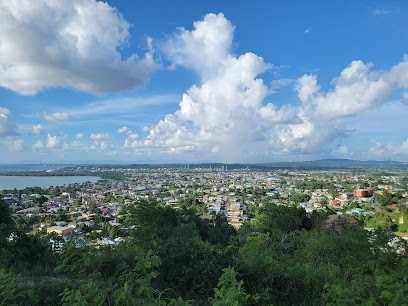
Skinner Park
Explore the natural beauty and vibrant culture of Skinner Park, a tranquil retreat in the heart of San Fernando, Trinidad.
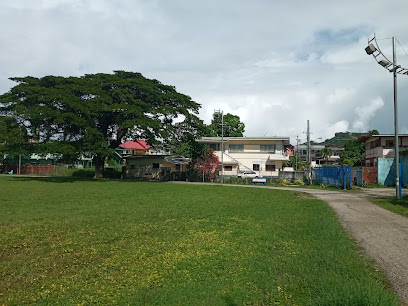
Pointe-a-Pierre Wildfowl Trust
Explore the serene paradise of Pointe-a-Pierre Wildfowl Trust, a sanctuary for birds and nature lovers in Trinidad and Tobago, dedicated to conservation and environmental education.
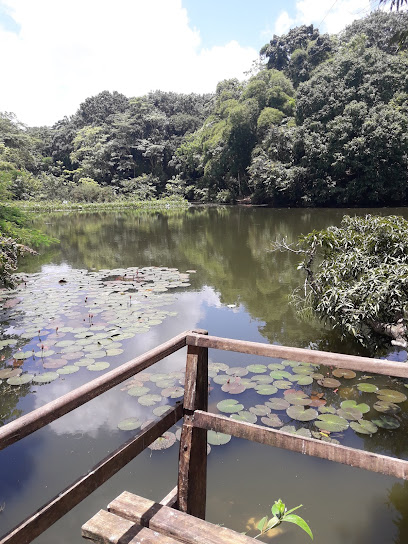
One Hundred Steps
Discover the historic One Hundred Steps in San Fernando, Trinidad - a captivating landmark offering breathtaking views and a rich cultural experience.

Uriah Butler Statue
Explore the Uriah Butler Statue in Pepper Village, a remarkable historical landmark celebrating Trinidad and Tobago's rich cultural heritage.

Unmissable attractions to see
Queen's Park Savannah
Experience the vibrant culture and natural beauty of Queen's Park Savannah, an urban oasis in Port of Spain, Trinidad, perfect for relaxation and exploration.
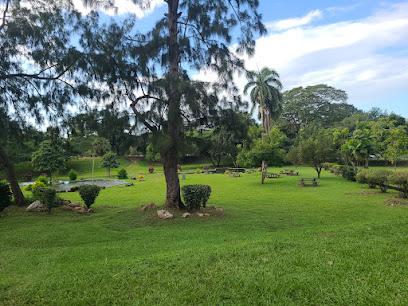
Royal Botanic Gardens
Discover the tranquil beauty of the Royal Botanic Gardens, a lush oasis in Port of Spain showcasing diverse plant life and serene landscapes.
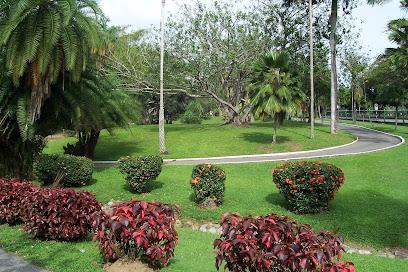
San Fernando Hill
Explore San Fernando Hill: A breathtaking national park with stunning views and rich cultural heritage in Trinidad and Tobago.
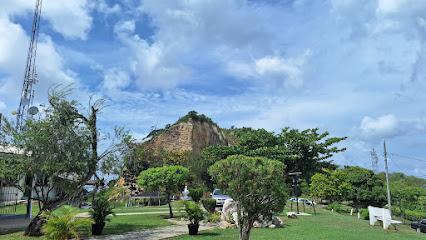
Chaguaramas Boardwalk
Discover the breathtaking views, local cuisine, and vibrant culture at Chaguaramas Boardwalk, a must-visit destination in Trinidad.

Caroni Bird Sanctuary
Explore the vibrant ecosystem of Caroni Bird Sanctuary, Trinidad's premier destination for birdwatching and nature lovers.
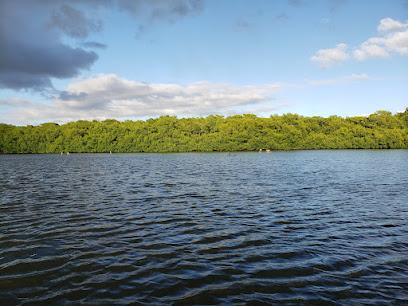
Skinner Park
Discover the serene beauty and vibrant culture of Skinner Park, a lush oasis in the heart of San Fernando, Trinidad.
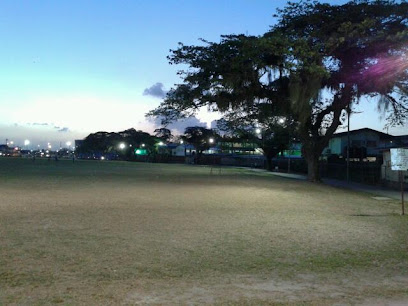
Brooklyn Bar
Discover the vibrant nightlife of Port of Spain at Brooklyn Bar, where lively ambiance meets delicious drinks and local flavors.
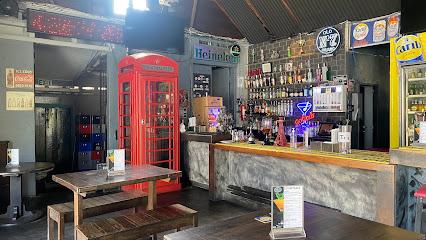
Pitch Lake
Explore Pitch Lake in Trinidad, the world's largest natural asphalt lake, where geology meets stunning landscapes and rich local culture.
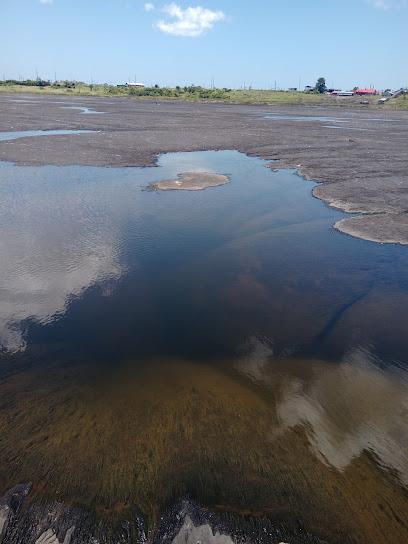
Lopinot Historical Complex
Explore the Lopinot Historical Complex, a captivating blend of Trinidad's colonial past, rich culture, and stunning natural beauty.
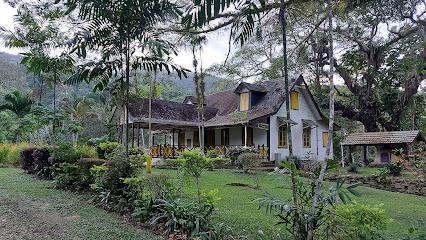
Fort George
Discover the rich history and breathtaking views at Fort George, a historic fortress in Port of Spain, Trinidad and Tobago.
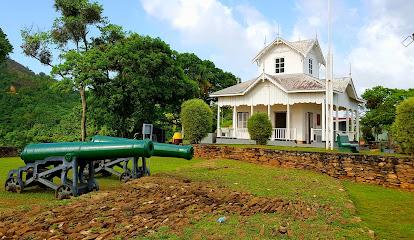
Cleaver Woods Park
Experience the serene beauty and rich history of Cleaver Woods Park, a hidden gem in D'Abadie perfect for nature lovers and outdoor enthusiasts.
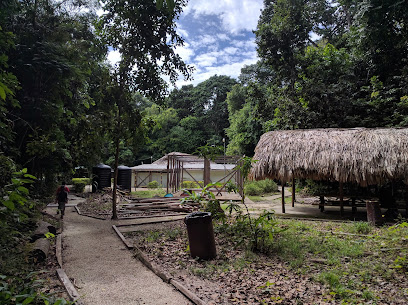
Fort Abercromby
Explore Fort Abercromby: A captivating historical landmark in Trinidad that offers stunning coastal views and a glimpse into the island's colonial past.
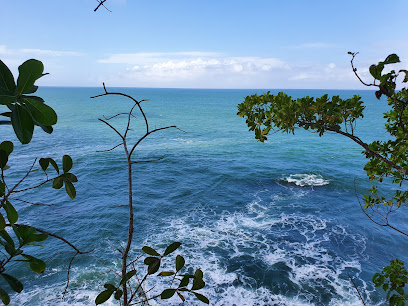
National Museum & Art Gallery
Discover the rich cultural heritage and vibrant art scene of Trinidad and Tobago at the National Museum & Art Gallery in Port of Spain.

Memorial Park
Discover the tranquil beauty and historical significance of Memorial Park in Port of Spain, a perfect retreat for relaxation and reflection.
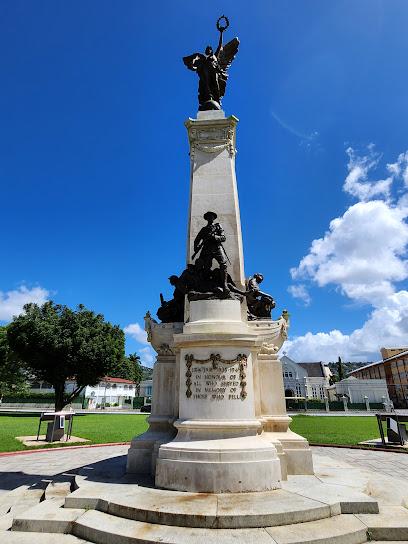
Royal Princess Casino
Discover the excitement of gaming and nightlife at Royal Princess Casino, a premier entertainment destination in San Fernando, Trinidad and Tobago.

Essential places to dine
519
Discover the lively spirit of Trinidad at 519 – where great food meets unforgettable experiences in San Fernando.
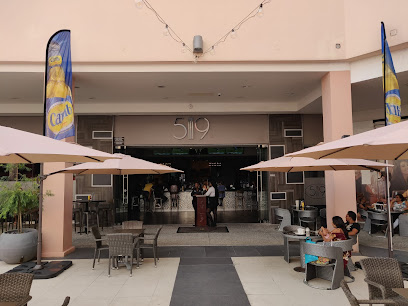
Krave
Experience the culinary excellence at Krave, where local flavors meet international cuisine in San Fernando's vibrant dining scene.

Rising Star
Discover authentic Asian flavors at Rising Star in San Fernando - where every meal is a celebration of culture and taste.
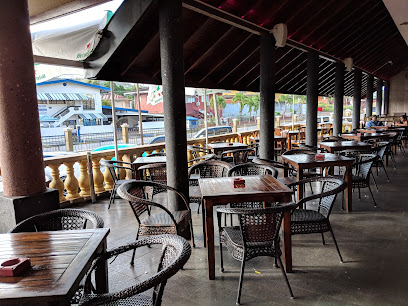
Soong's Great Wall Restaurant
Discover the essence of Asian cuisine at Soong's Great Wall Restaurant in San Fernando—a culinary gem offering authentic dishes in an inviting setting.
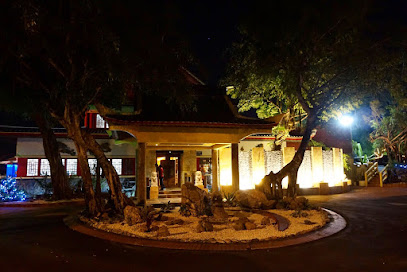
Grill on the Hill
Experience mouth-watering barbecue delights at Grill on the Hill in San Fernando - where flavor meets Caribbean hospitality.
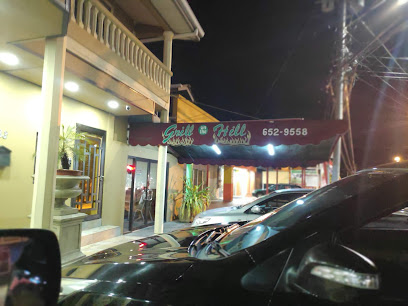
The New Dim Sum King Restaurant Ltd
Experience authentic Asian flavors at The New Dim Sum King Restaurant - a culinary delight in Duncan Village's Southland Mall.
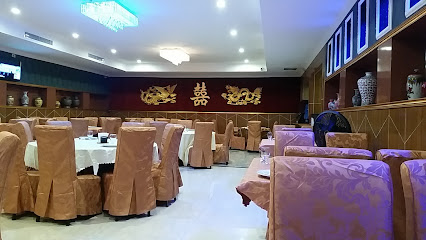
More Vino
Discover the exquisite taste of authentic sushi at More Vino in San Fernando – where every roll tells a delicious story.
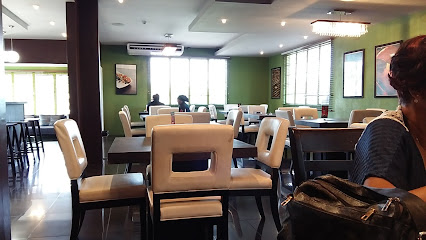
Canboulay
Experience the vibrant flavors of Trinidad at Canboulay in San Fernando – where local cuisine meets a lively atmosphere.
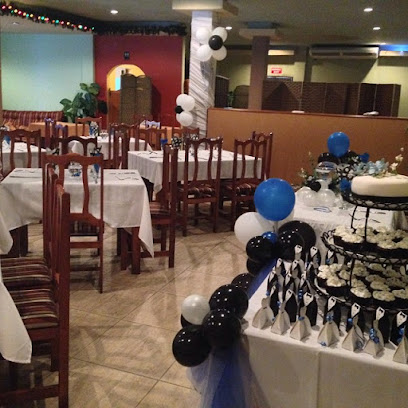
Palki Authentic Indian Restaurant
Discover the rich tapestry of Indian cuisine at Palki Authentic Indian Restaurant in San Fernando - where every meal tells a story.
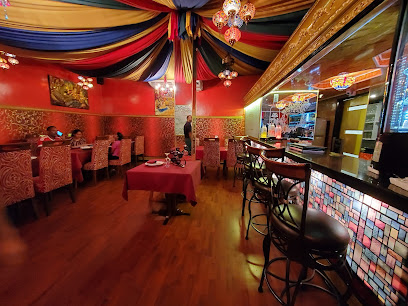
Eat It Restaurant
Discover authentic Trinidadian cuisine at Eat It Restaurant in San Fernando - where every meal is a celebration of flavor.
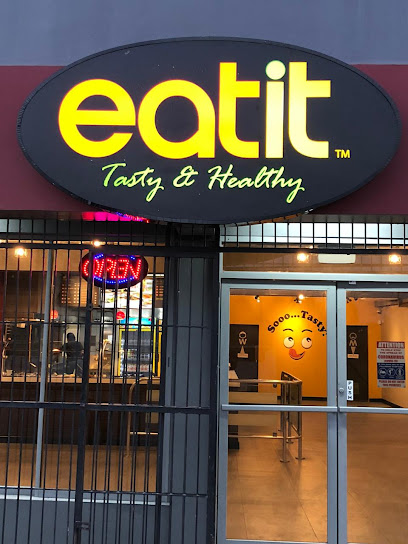
Bottles And Bites
Discover the vibrant flavors of Trinidad at Bottles And Bites - where exceptional cuisine meets lively atmosphere in San Fernando.
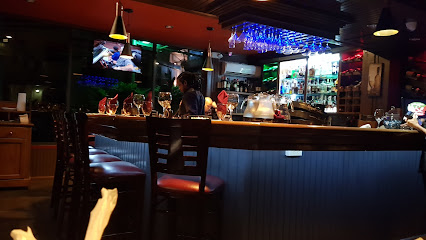
Steel Restaurant and Lounge
Experience the vibrant culinary scene of Trinidad at Steel Restaurant and Lounge, where local flavors meet chic dining in San Fernando.
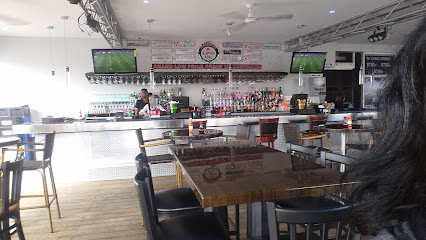
Toppers Restaurant & Bar
Experience exquisite dining at Toppers Restaurant & Bar in San Fernando – where local flavors meet international cuisine in a vibrant atmosphere.
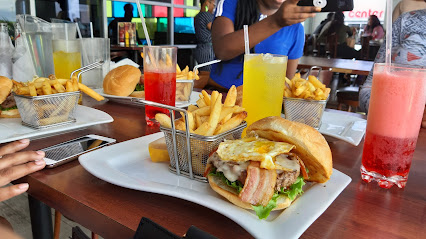
Aquarium
Savor exquisite seafood and local flavors at Aquarium Restaurant in San Fernando, where vibrant ambiance meets culinary excellence.
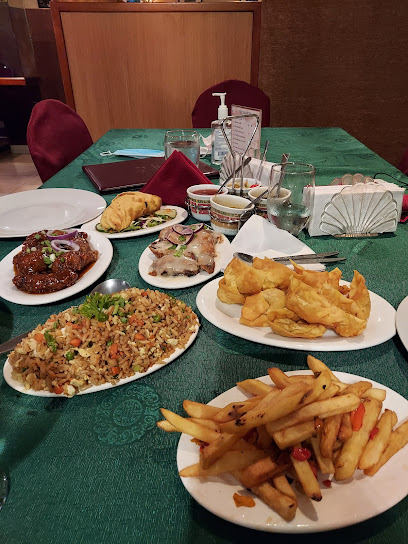
Paul A Grant Butcher's Steakhouse
Discover culinary excellence at Paul A Grant Butcher's Steakhouse in San Fernando – where every steak is crafted with passion.
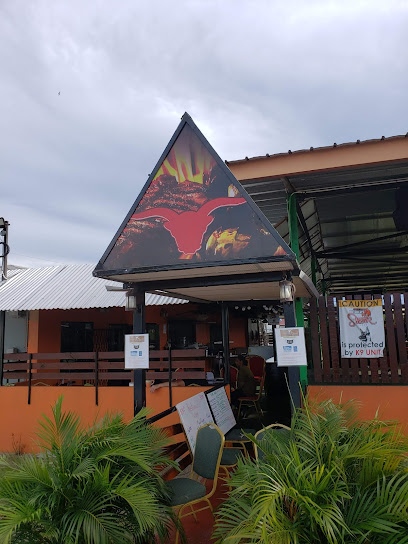
Markets, malls and hidden boutiques
Allison's Variety & Bridal Boutique
Explore Allison's Variety & Bridal Boutique in San Fernando for exquisite bridal gowns and personalized service to make your wedding dreams come true.
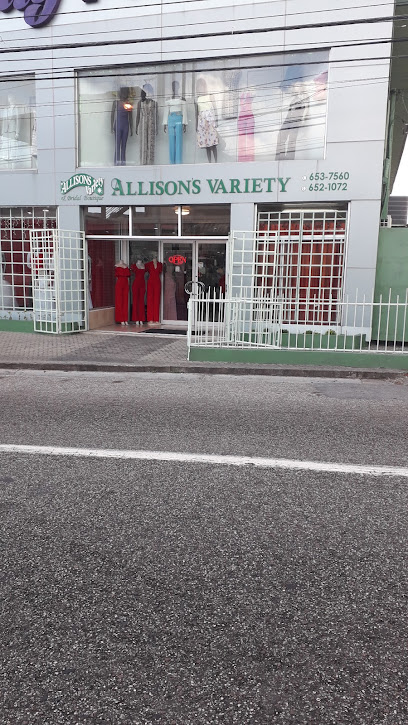
Vault Clothing Store
Explore Vault Clothing Store in San Fernando for stylish apparel that reflects the vibrant culture and fashion trends of Trinidad and Tobago.
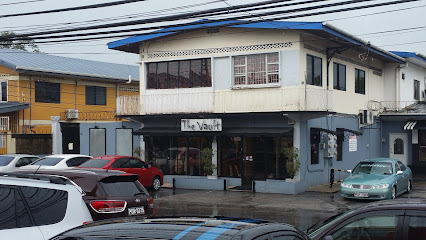
Marcus International Brands Galore
Discover a world of fashion at Marcus International Brands Galore in San Fernando, where style meets quality and variety.
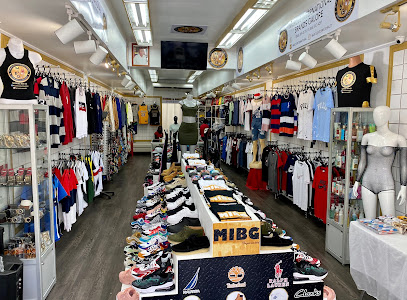
Kids Collection
Discover The Kids Collection in San Fernando for the finest baby clothing, unique children's furniture, and delightful toys, perfect for every little one's needs.
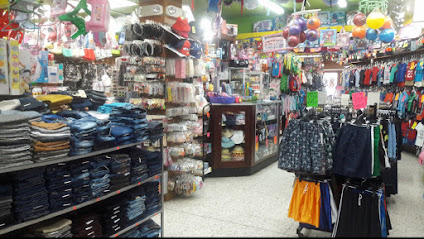
New Wave Apparel & Accessories
Explore the trendy world of fashion at New Wave Apparel & Accessories, where every piece tells a story and style knows no bounds.
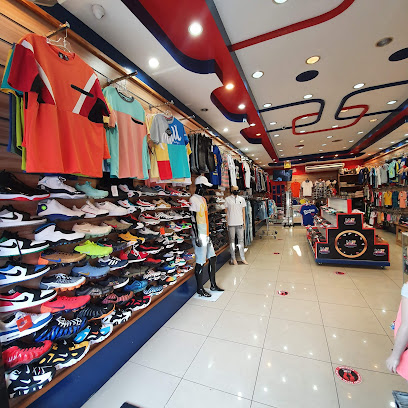
Rajendra’s
Explore Rajendra's, the quintessential souvenir store in San Fernando, showcasing authentic Trinidadian crafts and unique gifts that capture the island's spirit.

Infinite Styles
Discover the vibrant world of fashion at Infinite Styles in San Fernando, where unique Caribbean trends meet exceptional quality.

Shivam's Premium Variety Store LTD
Experience local shopping at Shivam's Premium Variety Store LTD, where unique finds and friendly service await every tourist in San Fernando.
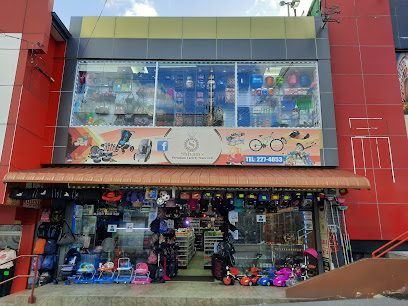
Caribbean Life Culture Shop
Discover unique handcrafted souvenirs and embrace the vibrant culture of Trinidad and Tobago at the Caribbean Life Culture Shop in San Fernando.
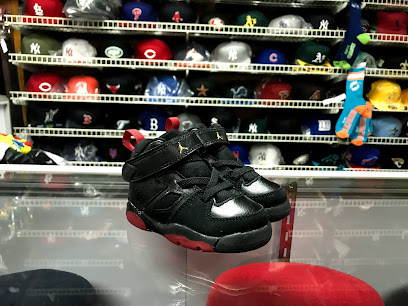
Fashion Trove
Explore Fashion Trove in San Fernando for a unique blend of local and international clothing styles that celebrate Trinidad's vibrant culture.

Unique Books and Sports Centre
Discover literary gems and sports gear at the Unique Books and Sports Centre in San Fernando, a cultural hub for book lovers and athletes alike.

Wonderful World
Explore Wonderful World, San Fernando's top fashion accessories store, offering unique styles and exceptional customer service for every fashion enthusiast.
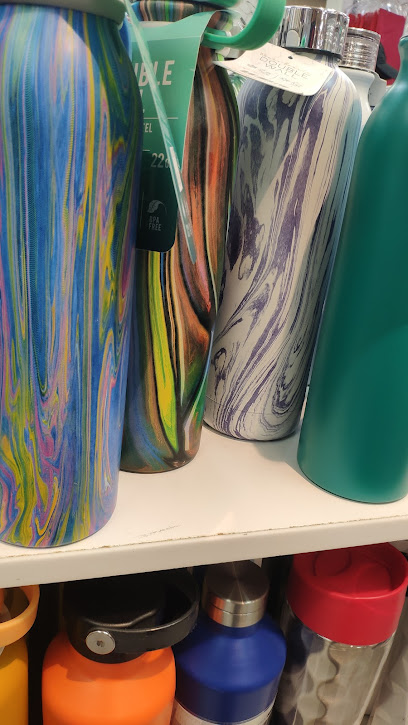
Peter's Boutique
Explore Peter's Boutique in San Fernando for exquisite fashion accessories that blend local artistry with contemporary style.

Pristine Image Company
Discover unique souvenirs and local craftsmanship at Pristine Image Company in Gulf City Mall, a must-visit for every traveler in Trinidad and Tobago.

Monarch Enterprises TT
Discover unique local crafts and affordable treasures at Monarch Enterprises TT in San Fernando, your go-to store for Trinidadian souvenirs.
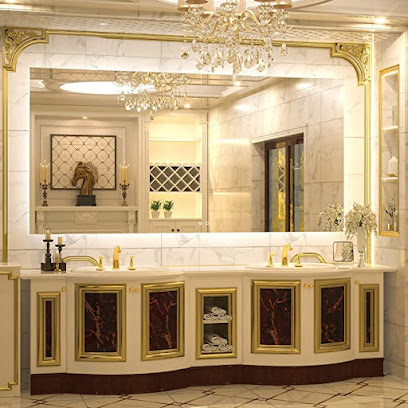
Essential bars & hidden hideouts
Infinity Bar & Lounge
Discover the lively Infinity Bar & Lounge in San Fernando, where delicious grills and vibrant nightlife meet for an unforgettable experience.
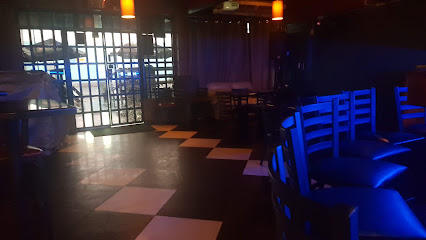
Monty's Sports Bar
Discover Monty's Sports Bar in San Fernando – a lively venue for delicious food, refreshing drinks, and an unforgettable local atmosphere.
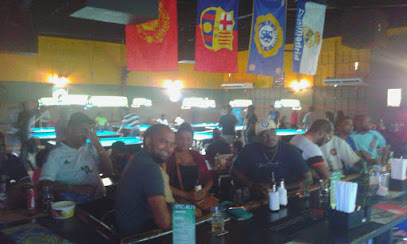
4Play Bar
Discover the vibrant nightlife of San Fernando at 4Play Bar, where cocktails flow and the energy never fades.
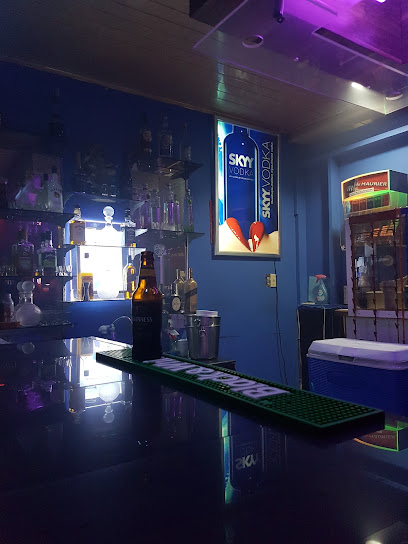
Horseman's Bar
Discover the lively Horseman's Bar in San Fernando, where vibrant atmosphere meets Trinidadian hospitality and refreshing local drinks.

Shi Bar
Experience the lively atmosphere of Shi Bar in San Fernando, Trinidad – where great drinks, live music, and local culture come together.
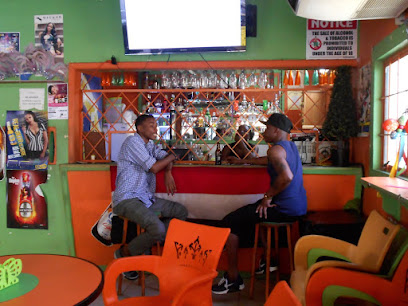
Versatile lounge
Discover the vibrant nightlife at Versatile Lounge in San Fernando, where exquisite drinks and a welcoming atmosphere create unforgettable experiences.

Wilson's Bar
Experience the vibrant nightlife and local culture at Wilson's Bar in San Fernando, Trinidad, where drinks and camaraderie flow freely.
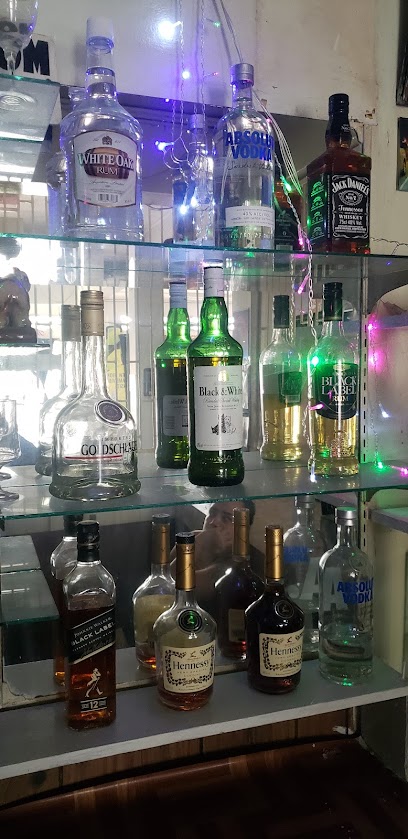
The Racers Edge
Experience the vibrant nightlife of San Fernando at The Racers Edge, where local flavors, great drinks, and friendly vibes await.

Smileys Bar
Discover the lively atmosphere of Smileys Bar in San Fernando, where local drinks and friendly service create unforgettable nightlife experiences.
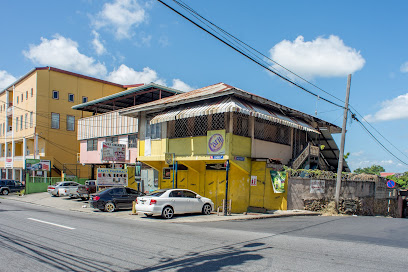
Cross Bar and Lounge
Discover the vibrant nightlife at Cross Bar and Lounge, San Fernando's premier destination for drinks, music, and memorable experiences.
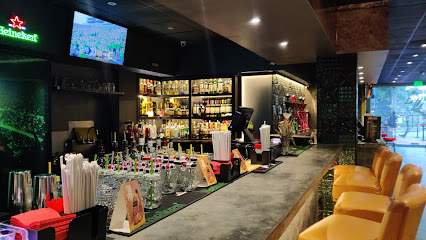
High Chaparral Bar an Restaurant
Experience the vibrant flavors of Trinidad at High Chaparral Bar and Restaurant, a local favorite in San Fernando, known for its welcoming atmosphere and delicious cuisine.
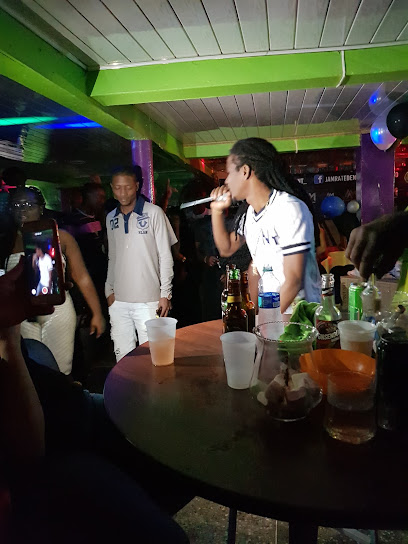
Skyline Pub
Experience the vibrant atmosphere of Skyline Pub in San Fernando—a haven for tourists seeking great drinks, local charm, and unforgettable moments.

Kanhai's Bar
Experience the local nightlife at Kanhai's Bar in San Fernando, where vibrant drinks and a friendly atmosphere await every visitor.

Thè Edge Restaurant And Bar
Experience the lively ambiance and delightful local flavors at Thè Edge Restaurant And Bar in San Fernando, Trinidad.
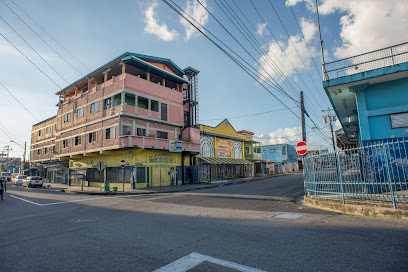
Boozy Lounge
Discover Boozy Lounge in San Fernando, Trinidad – a vibrant bar and grill offering delicious eats, crafted cocktails, and an unforgettable nightlife experience.
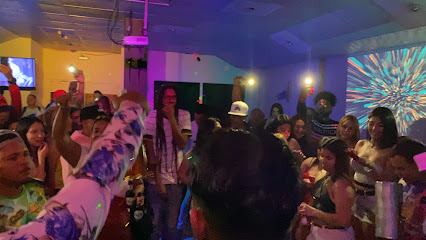
Local Phrases
-
- HelloWah Gwan
[Wah Gwan] - GoodbyeLater
[Later] - YesYes
[Yes] - NoNah
[Nah] - Please/You're welcomePlease/No problem
[Please/No problem] - Thank youTank yuh
[Tank yuh] - Excuse me/SorrySarry
[Sarry] - How are you?How yuh doin?
[How yuh doin?] - Fine. And you?Ah good. An yuh?
[Ah good. An yuh?] - Do you speak English?Yuh speak English?
[Yuh speak English?] - I don't understandAh doh overstand
[Ah doh overstand]
- HelloWah Gwan
-
- I'd like to see the menu, pleaseLemme see de menu nah
[Lemme see de menu nah] - I don't eat meatAh doh eat meat
[Ah doh eat meat] - Cheers!Cheers!
[Cheers!] - I would like to pay, pleaseLemme pay nah
[Lemme pay nah]
- I'd like to see the menu, pleaseLemme see de menu nah
-
- Help!Help!
[Help!] - Go away!Geh wey!
[Geh wey!] - Call the Police!Call de Police!
[Call de Police!] - Call a doctor!Call ah doctor!
[Call ah doctor!] - I'm lostAh lost
[Ah lost] - I'm illAh sick
[Ah sick]
- Help!Help!
-
- I'd like to buy...I want to buy...
[I want to buy...] - I'm just lookingAh just looking
[Ah just looking] - How much is it?How much dat is?
[How much dat is?] - That's too expensiveDat too expensive
[Dat too expensive] - Can you lower the price?Could yuh drop de price?
[Could yuh drop de price?]
- I'd like to buy...I want to buy...
-
- What time is it?What time it is?
[What time it is?] - It's one o'clockIt one o'clock
[It one o'clock] - Half past (10)Half after (10)
[Half after (10)] - MorningMawnin
[Mawnin] - AfternoonEvenin
[Evenin] - EveningEvenin
[Evenin] - YesterdayYestadeh
[Yestadeh] - TodayToday
[Today] - TomorrowTomorrer
[Tomorrer] - 1One
[One] - 2Two
[Two] - 3Tree
[Tree] - 4Four
[Four] - 5Five
[Five] - 6Six
[Six] - 7Seven
[Seven] - 8Eight
[Eight] - 9Nine
[Nine] - 10Ten
[Ten]
- What time is it?What time it is?
-
- Where's a/the...?Weh de...dey?
[Weh de...dey?] - What's the address?Weh de address dey?
[Weh de address dey?] - Can you show me (on the map)?Yuh could show me (on de map)?
[Yuh could show me (on de map)?] - When's the next (bus)?When de nex (bus) comin?
[When de nex (bus) comin?] - A ticket (to ....)A ticket (to ....)
[A ticket (to ....)]
- Where's a/the...?Weh de...dey?
History of San Fernando
-
Long before the arrival of European settlers, the area now known as San Fernando was inhabited by Amerindian tribes, primarily the Arawaks and Caribs. These indigenous people thrived on the rich resources provided by the forests and coastal waters, establishing a vibrant and self-sufficient community.
-
In the late 16th century, Spanish explorers arrived in Trinidad and began to establish settlements. San Fernando was initially named ‘Anaparima’ by the Amerindians, which means 'single hill'. The Spanish renamed it San Fernando in honor of King Ferdinand III of Castile. They introduced Christianity and European agricultural practices to the indigenous population.
-
After the Treaty of Amiens in 1802, Trinidad, including San Fernando, officially became a British colony. This period marked significant changes, including the development of sugarcane plantations and the introduction of African slaves. The town of San Fernando grew as a trading hub due to its strategic location and port facilities.
-
With the abolition of slavery in 1834, San Fernando saw an influx of indentured laborers from India, China, and Portugal, who were brought to work on the plantations. This diverse mix of cultures significantly influenced the social and cultural fabric of San Fernando, leading to a rich tapestry of traditions, cuisine, and festivals.
-
In the early 20th century, the discovery of oil in Trinidad led to rapid industrial development in San Fernando. The establishment of the Pointe-à-Pierre oil refinery in 1917 played a pivotal role in the town's economy, drawing workers from all over the country and fostering urban growth. San Fernando became known as the industrial capital of Trinidad and Tobago.
-
San Fernando Hill has been a significant landmark throughout the town's history. Originally used by the Amerindians for ceremonial purposes, it later served as a lookout point for colonial settlers. In the 20th century, it became a symbol of environmental conservation efforts, with local activists successfully lobbying to protect it from quarrying activities. Today, it stands as a popular recreational site offering panoramic views of the city and the Gulf of Paria.
-
San Fernando boasts a vibrant cultural scene, deeply influenced by its diverse population. The city celebrates numerous festivals such as Divali, Eid, and Christmas, reflecting its multicultural heritage. The annual San Fernando Carnival is a highlight, showcasing spectacular parades, calypso music, and traditional costumes, drawing visitors from across the globe.
San Fernando Essentials
-
San Fernando, located in the southern part of Trinidad, can be accessed via the Piarco International Airport in the capital city Port of Spain. From Piarco, you can take a taxi or a private shuttle to San Fernando, which is approximately an hour's drive away. Public transportation options include maxi-taxis and buses that run from Port of Spain to San Fernando. Additionally, car rentals are available at the airport for those who prefer to drive.
-
San Fernando offers a variety of transportation options. Maxi-taxis are a popular and affordable way to get around the city and its surroundings. Local buses also service many routes within the city. Taxis are readily available and can be hailed on the street or booked via phone. For a more flexible mode of transport, car rentals are available. Be mindful of traffic, especially during peak hours, as it can be quite congested.
-
The official currency in Trinidad and Tobago is the Trinidad and Tobago Dollar (TTD). Major credit cards are widely accepted in hotels, restaurants, and shops. However, it's advisable to carry some cash for small purchases and in areas where card payment might not be available. ATMs are conveniently located throughout San Fernando, and foreign currency can be exchanged at local banks and currency exchange offices.
-
San Fernando is generally safe for tourists, but like any other city, it's important to take standard precautions. Avoid walking alone at night in unfamiliar areas and be cautious with your belongings in crowded places. Some areas with higher crime rates include Embacadere and La Romaine. It is advisable to stay vigilant and aware of your surroundings at all times.
-
In case of an emergency, dial 999 for police assistance, 990 for the fire service, and 811 for medical emergencies. San Fernando General Hospital is the primary medical facility in the area. Pharmacies are widely available for minor health issues and over-the-counter medications. It is recommended to have travel insurance that covers medical emergencies.
-
Fashion: Do dress modestly, especially when visiting religious or cultural sites. Avoid overly revealing clothing. Religion: Do respect local customs and traditions. When visiting religious sites, dress conservatively and behave respectfully. Public Transport: Do be courteous and offer your seat to elderly passengers. Don't eat or drink on public transport. Greetings: Do greet with a friendly 'Good day' or 'Good evening'. A handshake is also common. Eating & Drinking: Do try local dishes and accept food offerings graciously. Don't refuse hospitality, as it is considered impolite.
-
To experience San Fernando like a local, visit the San Fernando Hill for a panoramic view of the city. Explore the local markets, such as the San Fernando Market, where you can buy fresh produce and local crafts. Engage with residents, who are often friendly and willing to share stories about the city's history and culture. Don't miss the opportunity to try local delicacies like doubles and roti. For a unique experience, take a walk along the King's Wharf and enjoy the coastal views.
Nearby Cities to San Fernando
-
Things To Do in Princes Town
-
Things To Do in Couva
-
Things To Do in Point Fortin
-
Things To Do in Chaguanas
-
Things To Do in Tunapuna
-
Things To Do in Port of Spain
-
Things To Do in Arima
-
Things To Do in Sangre Grande
-
Things To Do in Scarborough
-
Things To Do in Westerhall
-
Things To Do in Grenville
-
Things To Do in Guava
-
Things To Do in Gouyave
-
Things To Do in Victoria
-
Things To Do in Sauteurs






